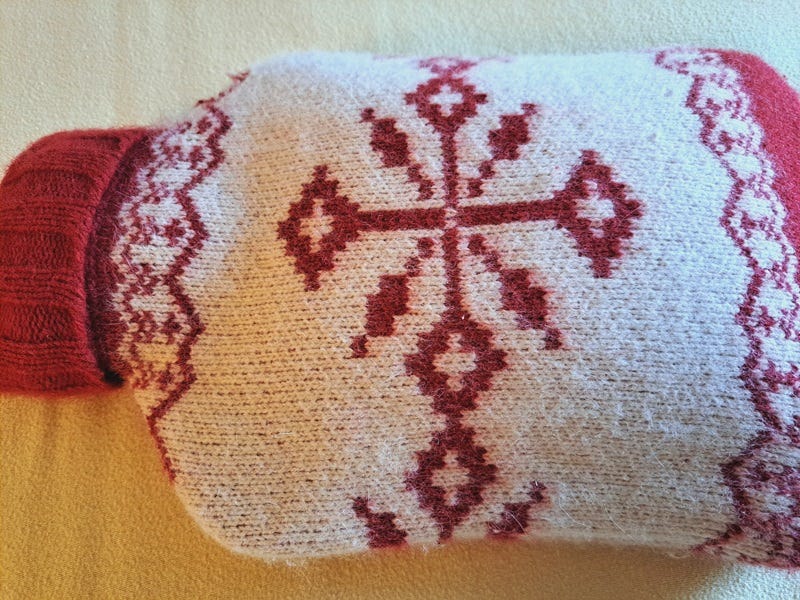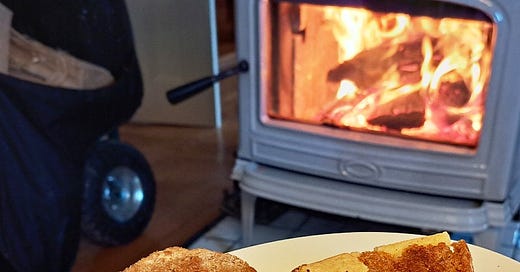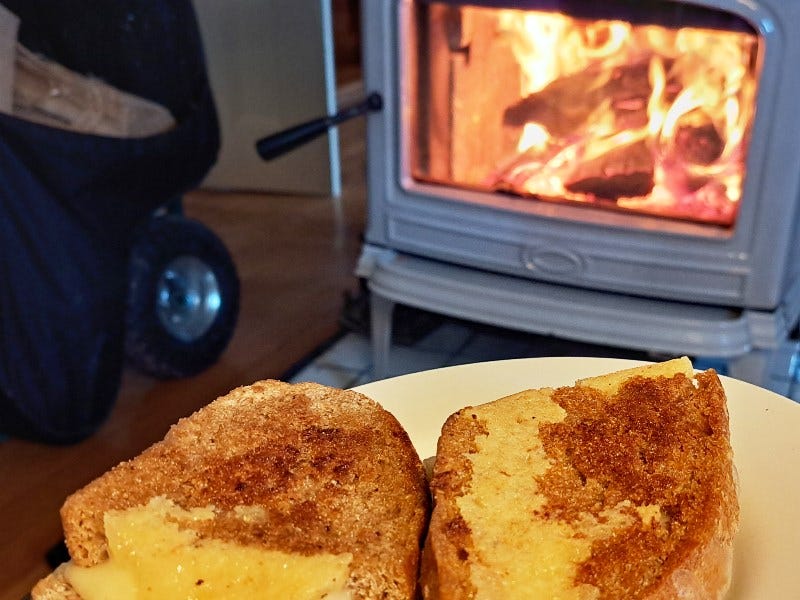Stay warm: radiant heat and hot-water bottles
Small things that help as we make our energy transitions
I was working for Valerie (Mrs. T. S.) Eliot three days a week when I got a contract to write Home Ecology. I started my research by going to Books For A Change, a shop in Charing Cross Road, where I found a number of books written by a physicist and energy expert named Walter Patterson. I wrote a letter asking if I could talk to him and he invited me to visit. On one of my home days, I parked little Tom with the childminder and took the Tube to north London. I spent the morning browsing Walter’s library, getting my first real sense of the issues I’d taken on: nuclear power, fossil fuel, renewables, electricity, energy systems.
Walter gave me lunch, and put the kettle on. After he poured out water for our drinks, he tossed a tea towel over the kettle, commenting that he liked to save energy wherever he could.
It was a small thing, and he made that clear. But it reassured me that the small things I would be writing about were part of a big picture. Walter’s quick, unthinking action was a good example. First, because keeping water hot for a second cup becomes instinctive. (This doesn’t work if you’re making pot of tea, of course, where you need freshly boiled water at 100C, but the remnant is still good for warming a second pot!) And because it demonstrates a principle to be applied to many other things: creating an air barrier, even just with a tea towel, slows the movement of energy - in this case, from the hot water into the air. It is a blindingly simple example of energy efficiency, and there are many ways in which that principle can be applied, and on much larger scale.
I often think that schools should plan their science classes in relation to civics lessons and social studies. Global citizens of the future will be much better able to make decisions if they have some knowledge of chemistry, physics, and biology. When I put together a reading list for Home Ecology, I’ll be putting science basics at the top.
Today, as record low temperatures are being set across the United States, and especially because the people of Ukraine are facing a winter without vital infrastructure and are no doubt much, much colder than most Americans and Europeans, here are some excellent articles from a publication, LOW←TECH MAGAZINE, that I would like to see architects and town planners and agricultural experts take note of. The wondrous thing about a fire, something people have known for millennia, is that you can get warm by sitting near it even if the rest of the place is chilly.
Insulating the body is more efficient than insulating a building, and thermal underclothing is particularly effective. In this article, we discuss another solution, which can be applied on its own or in combination with better clothing: local heating.
Contrary to air heating, which distributes warmth throughout a space, radiant and conductive heating systems act much more locally; they can make people comfortable without having to warm the whole space.
Bundle up, insulate, and turn the thermostat down! I’m actually keeping my thermostat at 50F this winter, using a small oil-filled electric heater in my study, and using a woodstove to provide almost all the heating. (The one we chose has a concealed cooktop, great for simmering a pot of soup but also hot enough to make grilled cheese sandwiches.)
I was at a big party last weekend that was partly outdoors, on a freezing night, thanks to several fire pits. And what could be more festive than a blazing fire? (Of course we’re lucky to live in the only region of the world that has been reforested in the past century, so firewood is fairly easy to come by, and much cheaper to use than oil or gas.)
And there’s nothing more comforting than a hot-water bottle at night (of course another human being is even better, but even then a hot-water bottle can be nice). The solar-powered LOW←TECH MAGAZINE has the scoop:
Imagine a personal heating system that works indoors as well as outdoors, can be taken anywhere, requires little energy, and is independent of any infrastructure. It exists – and is hundreds of years old.

Thinking of the big picture, there’s been important news: a major breakthrough by US scientists in the race to recreate nuclear fusion. And we’re seeing e-bike programs boom (there’s even e-bike share in Madison, Wisconsin), and solar panels are becoming a commonplace. I love this morning view of the Rocky Mountains from my mother’s new place in Denver; solar panels are just part of the landscape (and a lot better looking than the wires strung around our towns).
Happy holidays, stay warm!






